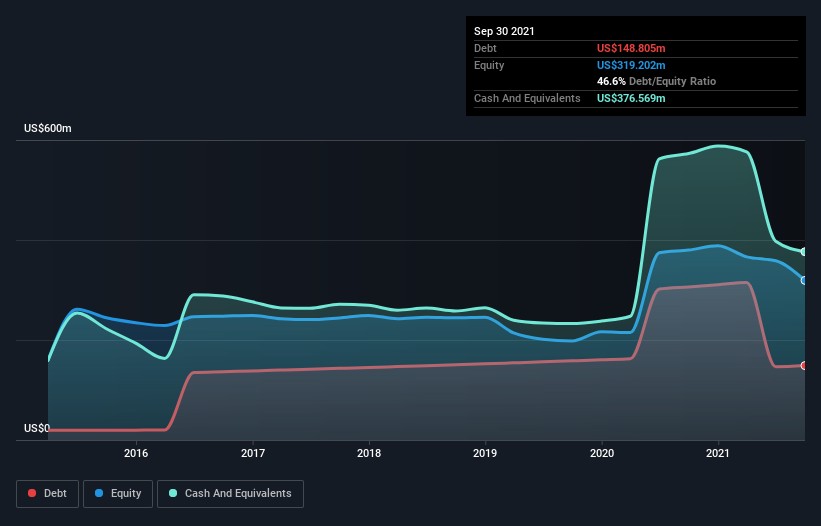Does Nevro (NYSE:NVRO) Have A Healthy Balance Sheet?
Howard Marks put it nicely when he said that, rather than worrying about share price volatility, 'The possibility of permanent loss is the risk I worry about... and every practical investor I know worries about.' So it might be obvious that you need to consider debt, when you think about how risky any given stock is, because too much debt can sink a company. We can see that Nevro Corp. (NYSE:NVRO) does use debt in its business. But the more important question is: how much risk is that debt creating?
When Is Debt A Problem?
Debt is a tool to help businesses grow, but if a business is incapable of paying off its lenders, then it exists at their mercy. Ultimately, if the company can't fulfill its legal obligations to repay debt, shareholders could walk away with nothing. However, a more usual (but still expensive) situation is where a company must dilute shareholders at a cheap share price simply to get debt under control. Of course, plenty of companies use debt to fund growth, without any negative consequences. The first thing to do when considering how much debt a business uses is to look at its cash and debt together.
See our latest analysis for Nevro
What Is Nevro's Debt?
The image below, which you can click on for greater detail, shows that Nevro had debt of US$148.8m at the end of September 2021, a reduction from US$306.1m over a year. However, its balance sheet shows it holds US$376.6m in cash, so it actually has US$227.8m net cash.
A Look At Nevro's Liabilities
According to the last reported balance sheet, Nevro had liabilities of US$74.8m due within 12 months, and liabilities of US$188.4m due beyond 12 months. Offsetting this, it had US$376.6m in cash and US$63.5m in receivables that were due within 12 months. So it can boast US$176.8m more liquid assets than total liabilities.
This short term liquidity is a sign that Nevro could probably pay off its debt with ease, as its balance sheet is far from stretched. Simply put, the fact that Nevro has more cash than debt is arguably a good indication that it can manage its debt safely. When analysing debt levels, the balance sheet is the obvious place to start. But it is future earnings, more than anything, that will determine Nevro's ability to maintain a healthy balance sheet going forward. So if you want to see what the professionals think, you might find this free report on analyst profit forecasts to be interesting.
Over 12 months, Nevro reported revenue of US$394m, which is a gain of 7.4%, although it did not report any earnings before interest and tax. We usually like to see faster growth from unprofitable companies, but each to their own.
So How Risky Is Nevro?
Statistically speaking companies that lose money are riskier than those that make money. And we do note that Nevro had an earnings before interest and tax (EBIT) loss, over the last year. Indeed, in that time it burnt through US$28m of cash and made a loss of US$108m. While this does make the company a bit risky, it's important to remember it has net cash of US$227.8m. That means it could keep spending at its current rate for more than two years. Overall, its balance sheet doesn't seem overly risky, at the moment, but we're always cautious until we see the positive free cash flow. When analysing debt levels, the balance sheet is the obvious place to start. However, not all investment risk resides within the balance sheet - far from it. These risks can be hard to spot. Every company has them, and we've spotted 2 warning signs for Nevro you should know about.
If you're interested in investing in businesses that can grow profits without the burden of debt, then check out this free list of growing businesses that have net cash on the balance sheet.
Have feedback on this article? Concerned about the content? Get in touch with us directly. Alternatively, email editorial-team (at) simplywallst.com.
This article by Simply Wall St is general in nature. We provide commentary based on historical data and analyst forecasts only using an unbiased methodology and our articles are not intended to be financial advice. It does not constitute a recommendation to buy or sell any stock, and does not take account of your objectives, or your financial situation. We aim to bring you long-term focused analysis driven by fundamental data. Note that our analysis may not factor in the latest price-sensitive company announcements or qualitative material. Simply Wall St has no position in any stocks mentioned.

